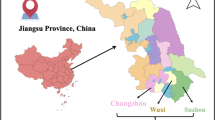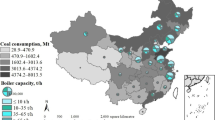Abstract
Smelting of copper, a crucially important resource, releases small amounts of mercury into the atmosphere, thereby endangering people and the global environment. This study estimated the expected changes in mercury emissions from copper smelting in response to future changes in copper demand in major copper-producing countries (China, DR Congo, Germany, Iran, Japan, Russia, South Korea, and the USA). Then it evaluated the expected effects of copper recycling promotion and mercury removal technology introduction on emissions. Results indicate that (1) the total expected copper demand of the major countries in 2050 is 15.9 Mton. (2) Under a business-as-usual scenario, the total atmospheric mercury emissions from major countries will be 36% greater than the 2022 estimate. However, promoting copper recycling and introducing mercury removal technologies can reduce that by 99.3%. (3) China, Russia, and Iran account for about 98% of 2022 total mercury emissions from copper smelting in the major countries. The introduction of mercury removal technologies in these countries is expected to have considerable reduction effects. (4) Changes in copper ore grades can cause atmospheric mercury emissions to fluctuate. Overall, these findings highlight the potential risks of increased atmospheric mercury emissions and underscore the importance of implementing effective countermeasures to mitigate these risks.










Similar content being viewed by others
References
UN environment: global mercury assessment 2018. UN environment programme, chemicals and health branch Geneva, Switzerland, 2019
AMAP/UN environment: technical background report for the global mercury assessment 2018. Arctic monitoring and assessment programme, Oslo, Norway/UN environment programme, chemicals and health branch, Geneva, Switzerland, 2019
Sverdrup HU, Ragnarsdottir KV, Koca D (2014) On modelling the global copper mining rates, market supply, copper price and the end of copper reserves. Resour Conserv Recycl 87:158–174
Schipper BW, Lin H-C, Meloni MA, Wansleeben K, Heijungs R, van der Voet E (2018) Estimating global copper demand until 2100 with regression and stock dynamics. Resour Conserv Recycl 132:28–36
Yoshimura A, Matsuno Y (2018) Dynamic material flow analysis of copper and copper alloy in global scale – forecast of in-use stock and inputs and the estimation of scrap recovery potential –. J Japan Inst Met Mater 82(1):8–17
Hatayama H, Daigo I, Matsuno Y, Adachi Y (2010) Outlook of the world steel cycle based on the stock and flow dynamics. Environ Sci Technol 44:6457–6463
Dong D, Tukker A, Van der Voet E (2019) Modeling copper demand in China up to 2050 – a business-as-usual scenario based on dynamic stock and flow analysis. J Ind Ecol 23:1363–1380
Yokoi R, Nakatani J, Hatayama H, Moriguchi Y (2022) Dynamic analysis of in-use copper stocks by final products and end-use sectors in Japan with insights into future demands. Resour Conserv Recycl 180:106153
He R, Small MJ (2022) Forecast of the U.S. copper demand: a framework based on scenario analysis and stock dynamics. Environ Sci Technol 56:2709–2717
Maung KN, Hashimoto S, Mizukami M, Morozumi M, Cherry ML (2017) Assessment of the secondary copper reserves of nations. Environ Sci Technol 51:3824–3832
International copper study group (ICSG); statistical database, 1960−2020.
World bureau of metal statistics (WBMS): world metal statistics yearbook, 1950–2020
United Nations Statistical Division: UN COMTRADE (United Nations commodity trade database), 1960−2020
World Bank: World Bank national accounts data, and OECD National Accounts data files – GDP (Constant 2015 US$), 1960–1980
International institute for applied systems analysis (IIASA): SSP database (shared socioeconomic pathways) – version 2.0, https://tntcat.iiasa.ac.at/SspDb, accessed November 2021
Japan organization for metals and energy security (JOGMEC): mineral resources material flow 2019 copper, http://mric.jogmec.go.jp/wp-content/uploads/2020/05/material_flow2019_Cu.pdf, accessed November 2021
AMAP/UN environment: technical background report for the global mercury assessment 2018, 2019
Yoshimoto N,Takaoka M, Oshita K, Mizuno T: Future estimate of the amount of recovered mercury from non-ferrous metal smelting, Proceedings of the 22nd annual conference of Japan society of material cycles and waste management, P2-E2–8, 2011
UN environment: guidance on best available techniques and best environmental practices, 2016
Northey S, Mohr S, Mudd GM et al (2014) Modelling future copper ore grade decline based on a detailed assessment of copper resources and mining. Resour Conserv Recycl 83:190–201
Australasian institute of mining and metallurgy (AusIMM): Cost estimation handbook, Chapter20, 2012
Acknowledgements
This research was performed by the Environment Research and Technology Development Fund (JPMEERF20S20604) of the Environmental Restoration and Conservation Agency Provided by the Ministry of Environment of Japan.
Funding
Environment Research and Technology Development Fund, JPMEERF20S20604, Seiji Hashimoto.
Author information
Authors and Affiliations
Corresponding author
Additional information
Publisher's Note
Springer Nature remains neutral with regard to jurisdictional claims in published maps and institutional affiliations.
Supplementary Information
Below is the link to the electronic supplementary material.
Rights and permissions
Springer Nature or its licensor (e.g. a society or other partner) holds exclusive rights to this article under a publishing agreement with the author(s) or other rightsholder(s); author self-archiving of the accepted manuscript version of this article is solely governed by the terms of such publishing agreement and applicable law.
About this article
Cite this article
Yamamoto, R., Dente, S. & Hashimoto, S. Scenarios for reducing copper smelting-related atmospheric mercury emissions through copper recycling and mercury removal technologies in major countries. J Mater Cycles Waste Manag 25, 2612–2618 (2023). https://doi.org/10.1007/s10163-023-01656-1
Received:
Accepted:
Published:
Issue Date:
DOI: https://doi.org/10.1007/s10163-023-01656-1




